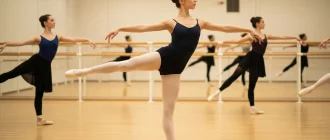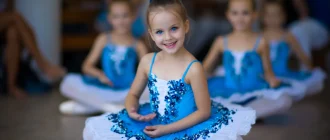Alicia Alonso was a Cuban prima ballerina and choreographer who revolutionized the art of ballet. She is renowned for founding the Ballet Nacional de Cuba and continuing to perform despite severe vision impairment. This article delves into her early life, remarkable career, profound impact on ballet, and enduring legacy.
Key Takeaways
- Alicia Alonso founded the Ballet Nacional de Cuba in 1948, establishing a significant national identity for Cuban ballet and nurturing local talent.
- Despite facing vision impairments, Alonso’s perseverance led her to stardom, particularly through her acclaimed performances, including her role as Giselle.
- Her influential collaborations with choreographer George Balanchine and her innovative approach to teaching have left a lasting impact on classical ballet and its evolution.
Alicia Alonso Podcast
Early Life and Training
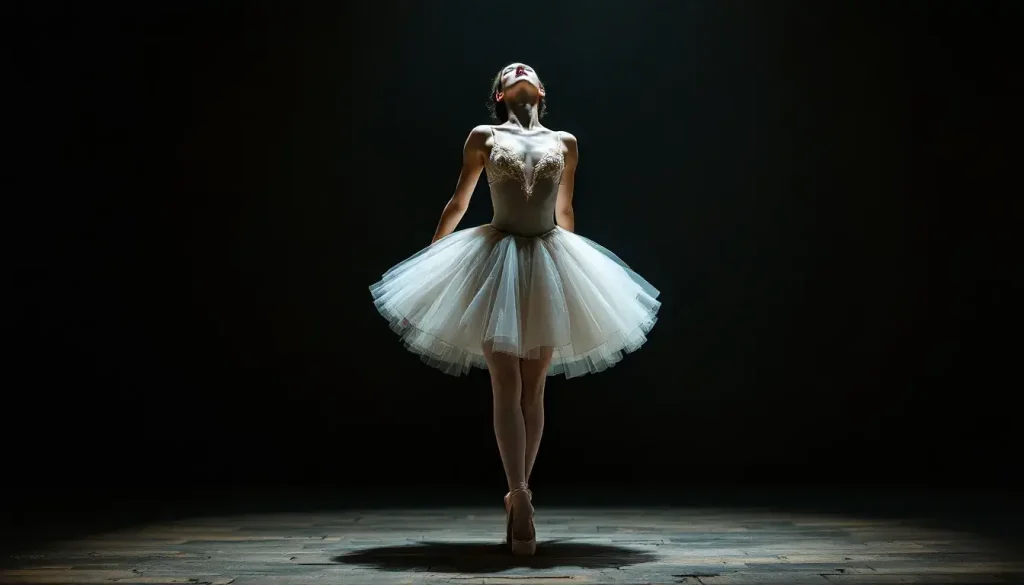
Alicia Alonso’s journey into the world of ballet began in her native Cuba, where her passion for dance was ignited at a very young age. Born in Havana in 1920, Alonso’s early years were marked by a profound love for movement and music. Her upbringing in Havana’s vibrant cultural landscape played a significant role in nurturing her budding talent.
At the age of eight, young Alicia took her first ballet studio class, marking the beginning of a journey that would lead to an illustrious professional career. This early start was just the beginning of a lifelong dedication to ballet.
Childhood in Havana
Growing up in Havana, Alicia Alonso was immersed in a rich cultural environment that celebrated the arts. She was drawn to ballet from a young age, and by the time she was eight, she had already begun to pursue her passion with determination. Her early dance lessons were more than just a hobby; they were the foundation of a career that would eventually elevate Cuban ballet on the world stage.
Alicia Alonso’s early experiences in Havana laid the groundwork for her future success as a young dancer. The city’s vibrant arts scene provided ample opportunities for her to explore and develop her talents. Her childhood was marked by learning the steps and understanding the profound cultural significance of dance in Latin America, which would later inform her work with the Ballet Nacional de Cuba.
Training at Pro Arte Musical
At eleven, Alicia Alonso took a significant step in her dance education by enrolling at the National Ballet Theatre, the Sociedad Pro Arte Musical. This prestigious institution was renowned for its rigorous training programs and commitment to nurturing young talent. Under the tutelage of her first ballet teacher, Nikolai Yavorsky, Alicia refined her skills and established a solid technical foundation in classical ballet.
Her time at Pro Arte Musical, a renowned dance school, played a crucial role in her development as a dancer. The dance school emphasized the importance of classical techniques, which would become a hallmark of her style. Alicia’s dedication to her training was evident, and her early performances showcased her exceptional talent and potential.
This period prepared her for the challenges and successes of her professional career.
Move to New York City
Alicia Alonso’s life changed dramatically when she married fellow dancer Fernando Alonso at sixteen and moved to New York City. This pivotal move opened up new opportunities for her to advance her ballet career.
In New York, Alicia trained at the School of American Ballet, further refining her technique and establishing a reputation for herself in the competitive ballet world. This transition marked the beginning of her rise to international stardom.
Rise to Stardom
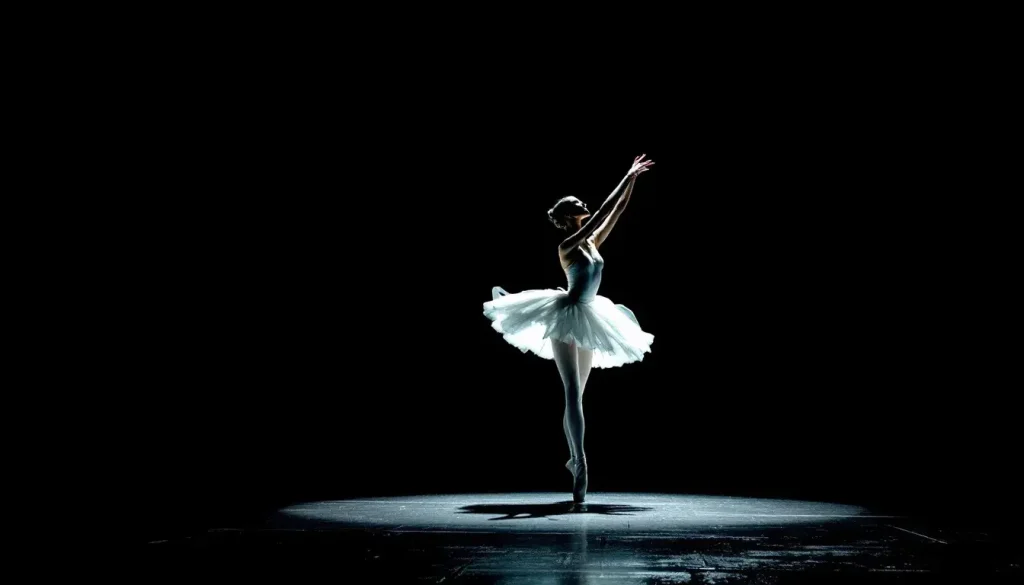
Alicia Alonso’s ascent to stardom was meteoric. After joining the American Ballet Theatre in 1940, her expressive performances quickly garnered attention and admiration from audiences and critics alike. Her rise in ballet was marked by groundbreaking performances showcasing her exceptional talent and emotional depth.
Joining the American Ballet Theatre
In 1940, Alicia Alonso’s career took a significant leap forward when she joined the American Ballet Theatre. Her undeniable talent quickly made a lasting impression on the ballet world. Her breakthrough came in 1943 when she performed the role of Giselle, a performance that would become one of her signature roles. This role showcased her technical prowess and extraordinary ability to convey deep emotion through dance.
Alonso’s portrayal of Giselle defined a significant moment in her career. Despite challenges like her deteriorating vision, she delivered a technically flawless and emotionally compelling performance. This role cemented her status as one of the leading ballerinas of her time and set the stage for future successes.
Signature Roles
Alicia Alonso’s career is distinguished by her iconic performances in some of the most celebrated ballets in history. Her portrayal of Giselle remains one of the most definitive in ballet history, highlighting her exceptional technique and emotional depth. This role and her performances in “Carmen” and “Swan Lake” solidified her reputation as a ballerina of unparalleled skill and artistry.
Despite her vision impairments, Alonso’s performances were lauded for their precision and expressiveness. Her ability to embody characters from the tragic Giselle to the passionate Carmen left a lasting impact on audiences and set a high standard for future interpretations. Her contributions to these ballets have had a profound influence on dancers and choreographers worldwide.
Collaborations with George Balanchine
Alicia Alonso’s collaborations with George Balanchine, one of ballet’s most influential choreographers, were pivotal in shaping her career and the evolution of modern ballet. Their partnership brought together Alonso’s artistic vision and Balanchine’s innovative choreography, resulting in groundbreaking and timeless performances.
These collaborations enhanced Alonso’s repertoire and contributed to the development of Ballet Nacional de Cuba, which has created more than 600 original works under her leadership. Their work continues to influence the international ballet community, highlighting the enduring impact of their artistic synergy.
Founding Ballet Nacional de Cuba
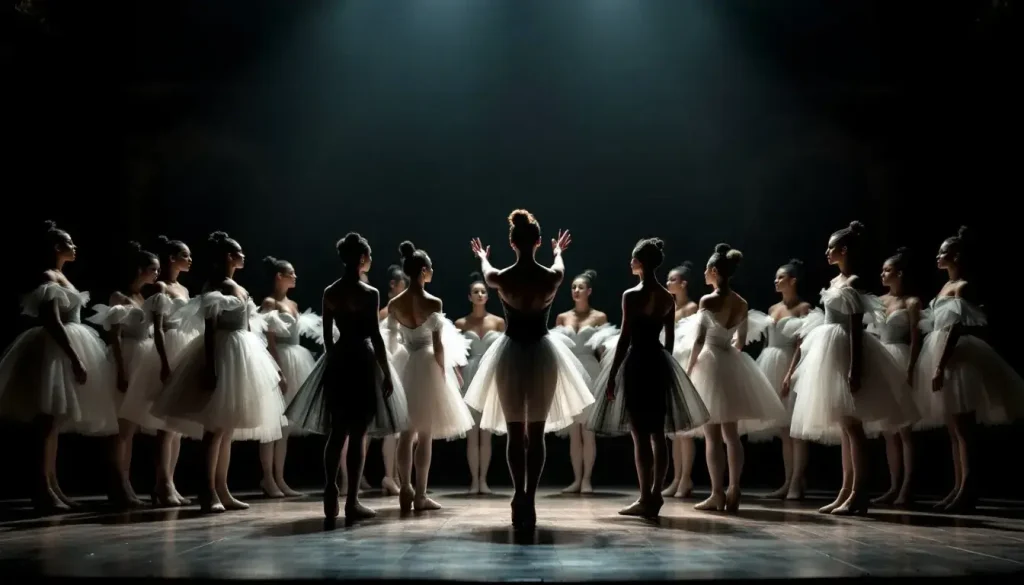
In 1948, Alicia Alonso founded the Alicia Alonso Ballet Company, which later evolved into the Ballet Nacional de Cuba, marking the beginning of a new era in Cuban ballet. Her vision was to create a distinct national identity in the ballet world, showcasing Cuba’s unique cultural heritage while adhering to the highest standards of classical ballet.
This endeavor elevated the profile of Cuban ballet. It provided a platform for the Cuban National Ballet by nurturing local talent and promoting Cuban artistry on the global stage, including the school’s international events.
Establishment and Growth
The establishment of Ballet Nacional de Cuba was a significant achievement for Alicia Alonso and her family. Initially named Ballet Alicia Alonso, also known as the Alicia Alonso Ballet Company, it played a crucial role in her legacy by showcasing her artistic contributions and the evolution of ballet in Cuba.
The company changed its name to Ballet Nacional de Cuba following the Cuban Revolution in 1959. Under Alonso’s guidance as artistic director, the company quickly gained recognition as a premier ballet institution, attracting talent from across the country and beyond.
Alicia and Fernando Alonso’s professional partnership was crucial to the company’s success. Fernando was the general and artistic director throughout, while Alicia’s creative vision and leadership drove the company’s growth and development. Together, they fostered an environment of creativity and excellence, making Ballet Nacional de Cuba a leading institution in ballet.
Training Cuban Dancers
Alicia Alonso’s commitment to nurturing local talent was evident in the rigorous training programs she established at Ballet Nacional de Cuba. She emphasized technical skill and cultural expression, ensuring young dancers received a comprehensive education for professional ballet careers. Her dedication to training Cuban dancers has significantly advanced Cuban ballet’s skills and recognition internationally.
The training programs Alonso developed have produced numerous accomplished dancers who have gone on to perform with major ballet companies worldwide. Her innovative approaches to teaching and performance have left an indelible mark on the classical ballet repertoire, influencing artists globally.
International Recognition
Under Alicia Alonso’s leadership, Ballet Nacional de Cuba gained international acclaim for its distinctive style and artistic achievements. The company’s performances, characterized by their technical precision and cultural richness, captivated audiences worldwide and elevated the status of Cuban ballet on the global stage.
Alonso’s focus on excellence and innovation drove the company’s success. Her vision and dedication to artistic expression solidified Ballet Nacional de Cuba’s reputation as one of the premier ballet companies worldwide. This international recognition brought prestige to the company and highlighted the unique contributions of Cuban ballet to the global arts community.
Overcoming Adversity
Alicia Alonso’s career was defined by her extraordinary ability to overcome adversity. Despite facing significant challenges due to her deteriorating vision, she continued to perform and excel in ballet, demonstrating remarkable adaptability and resilience.
Her story testifies to the strength of the human spirit and the transformative power of art.
Struggles with Vision
Alicia Alonso’s vision impairment began at the age of nineteen, posing serious obstacles throughout her dancing career. She suffered from a detached retina, which led to multiple surgeries and ultimately left her partially blind with no peripheral vision. Despite these challenges, Alonso’s determination to dance never wavered.
Her condition required her to undergo numerous surgeries for detached retinas and cataracts, resulting in almost complete blindness for a decade. During this time, she relied on strong stage lights and markers to guide her performances, demonstrating her extraordinary ability to adapt and persevere.
Perseverance and Adaptation
Alicia Alonso’s adaptation to dancing with her vision impairment was remarkable. She developed a heightened sense of spatial awareness, enabling her to execute complex dance moves with precision and confidence. This innovative approach helped her to continue dancing and performing at a high level, even in lead dancing roles like “Giselle.”
Her unyielding determination showcased her talent and inspired many young dancers facing their challenges. Alonso’s legacy of perseverance inspires generations of dancers, embodying the spirit of overcoming adversity in ballet.
Legacy and Impact

Alicia Alonso’s legacy in ballet is profound and far-reaching. Her emotional depth and technical skill, particularly in “Giselle,” have left an indelible mark on ballet. Throughout her career, she received numerous accolades recognizing her artistic achievements and contributions to ballet, further cementing her status as a cultural icon.
Influence on Cuban Ballet
Alicia Alonso was pivotal in shaping the Cuban ballet scene. Through her work with Ballet Nacional de Cuba, she mentored numerous dancers, ensuring the preservation and evolution of ballet in her native Cuba. Her influence extended beyond her performances; she nurtured the next generation of Cuban dancers, instilling the same passion and dedication that defined her career.
Her legacy continued through her daughter, Laura Alonso, who became a dancer and instructor with the National Ballet of Cuba. This generational impact has helped maintain Cuban ballet’s high standards, ensuring Alicia Alonso’s contributions will be remembered for years.
Contributions to Classical Ballet
Alicia Alonso’s contributions to classical ballet are significant and lasting. Her performance in “Giselle” for the American Ballet Theatre marked a milestone in her career, showcasing her exceptional talent and emotional expressiveness. Her collaborations with renowned choreographer George Balanchine significantly influenced the evolution of ballet, blending classical techniques with innovative choreography.
Alonso’s unique stage techniques, developed to offset her vision challenges, have influenced classical ballet performance practices. Under her leadership, Ballet Nacional de Cuba blended classical ballet with Cuban cultural elements, enriching the national school’s global ballet repertoire and influencing artists worldwide.
Honors and Awards
Alicia Alonso received numerous accolades throughout her illustrious career, recognizing her artistry and impact on the ballet community. These honors included an honorary doctorate from the University of Havana and the prestigious Order of José Martí, Cuba’s highest civilian honor. Such awards reflect her enduring influence within the international ballet community and underscore the significant legacy she left behind.
Personal Life
Alicia Alonso’s personal life was deeply intertwined with her professional career. Her relationships and family played a significant role in her journey, providing support and inspiration.
Marriage to Fernando Alonso
At sixteen, Alicia Alonso married fellow ballet dancer Fernando Alonso, forming a strong personal and professional partnership. Their marriage was marked by mutual support and collaboration, with both professional dancers encouraging each other in their pursuits. This partnership enriched their personal lives and had a significant impact on the Cuban ballet scene, inspiring future generations.
Alicia and Fernando often performed together on stage, showcasing their remarkable chemistry and shared passion for dance. Their collaboration as dancers has also extended beyond performances; Fernando played a crucial role in the administrative and educational aspects of Ballet Nacional de Cuba, complementing Alicia’s artistic vision.
Family and Personal Interests
Alicia Alonso’s family remained a central part of her life. After her first marriage ended in divorce, she married dance critic Pedro Simón Martínez in 1975. She took a brief hiatus from her dance career to give birth to her daughter Laura, who would later follow in her footsteps as a dancer and instructor.
Beyond her professional career, Alicia maintained strong ties with her family and was involved in various cultural activities.
Celebrating Alicia Alonso Today
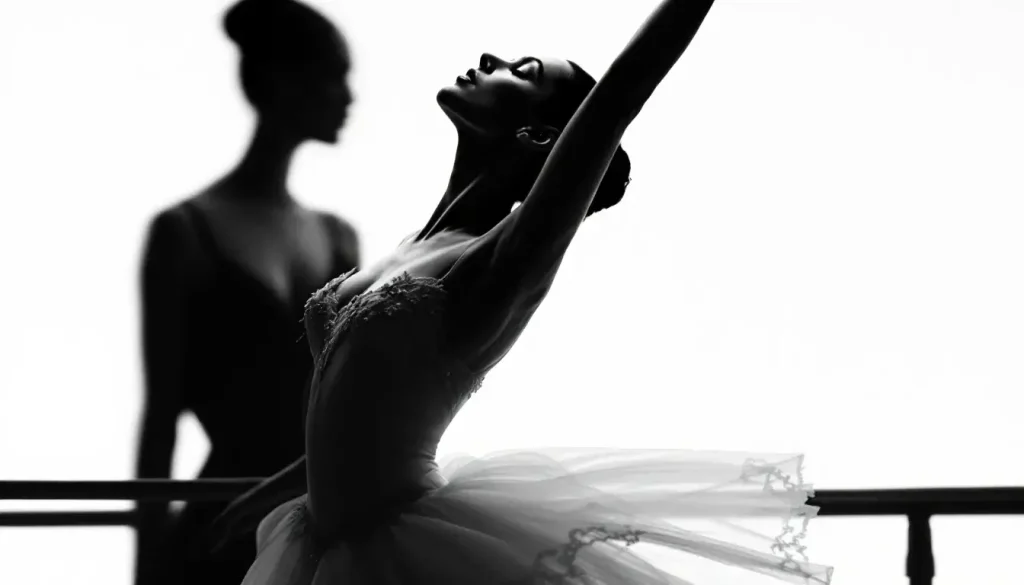
Alicia Alonso’s legacy continues to be celebrated through various events and tributes that honor her contributions to the world of ballet. Her influence remains a guiding light for dancers and artists worldwide.
Tributes and Memorials
Numerous memorial events globally celebrate Alicia Alonso’s life and achievements in dance. In Cuba, various artistic events and performances are held to honor her contributions to the national ballet, the country’s premier ballet company.
The International Ballet Festival of Havana, named in her honor, is a testament to her enduring impact on ballet, showcasing performances and paying tribute to her legacy. Performances dedicated to Alonso, such as those by the American Ballet Theatre at Lincoln Center, continue to celebrate her immense contributions to dance.
Continuing Her Legacy
The biennial International Ballet Festival of Havana, organized by Alicia Alonso, supports her artistic vision by featuring classical and contemporary ballet. This festival and the International Cuban Dance Festival showcase performances and workshops reflecting Alonso’s influence and dedication to ballet. These events are crucial in preserving her legacy, ensuring her contributions to ballet are remembered and celebrated.
Through these festivals and educational programs, Alicia Alonso’s vision and passion for ballet continue to inspire future generations of dancers and choreographers. Her legacy lives on in the hearts of those who knew her, as well as in the continued excellence of the Ballet Nacional de Cuba and the global ballet community.
| Category | Core fact (widely known) | Niche / lesser-known insight |
|---|---|---|
| Birth & identity | Born 21 Dec 1920 in Havana; died 17 Oct 2019; hailed as Cuba’s prima ballerina assoluta. en.wikipedia.org | As a child, she spent a year in Spain studying traditional flamenco, an influence that later colored her dramatic style. |
| Training & early career | Studied at Havana’s Sociedad Pro-Arte Musical and the School of American Ballet; rocketed to fame after a last-minute Giselle at Ballet Theatre (ABT) in 1943. | First public stage appearance came at age 11 (December 29, 1931) under the stage name Alicia Martínez. |
| Vision challenges | Multiple retinal-detachment surgeries left her partially blind from age 19—yet she still danced principal roles worldwide. | She had colored spotlights placed at strategic points and a thin wire along the stage edge so she could “feel” her position; partners rehearsed exact placements to keep her safe. |
| International milestones | Co-founded and directed Ballet Nacional de Cuba (1955-2019); iconic for Giselle and Carmen. | In 1957-58, she became the first Western-hemisphere dancer invited to perform with both the Bolshoi and Kirov companies in the USSR. |
| Awards & honors | Named prima ballerina assoluta; received UNESCO’s Pablo Picasso Medal (1999). britannica.com | Also a Commandeur of France’s Ordre des Arts et des Lettres (1998) and a 1958 Dance Magazine Award winner—recognition that preceded most Cold-War cultural exchanges. |
| Legacy | Havana’s Gran Teatro was renamed “Teatro Alicia Alonso” in 2016, and the Havana International Ballet Festival now carries her name. collections.libraries.indiana.edu | She performed her solo, “The Butterfly,” at the age of 75 (1995), bringing to a close a seven-decade stage career on pointe. |
Resume
Alicia Alonso’s life and career were marked by extraordinary talent, resilience, and a profound impact on the world of ballet. From her early years in Havana to her rise to international stardom, she overcame immense challenges to leave an indelible mark on the art form.
Her contributions to Cuban ballet, including iconic performances and innovative dance approaches, have inspired countless artists worldwide. As we celebrate her legacy today, we are reminded of the power of perseverance and the enduring spirit of artistic excellence. Alicia Alonso’s story is a beacon of inspiration, lighting the way for future generations.
Frequently Asked Questions
What was Alicia Alonso’s most famous role?
Alicia Alonso’s most famous role was Giselle, renowned for her exceptional technique and emotional depth, solidifying her legacy in ballet history.
How did Alicia Alonso overcome her vision impairment?
Alicia Alonso overcame her vision impairment by developing heightened spatial awareness and utilizing stage lights and floor markers to assist her navigation during performances. Her determination and innovative techniques enabled her to excel as a performer, despite the challenges she faced.
What is the Ballet Nacional de Cuba?
The Ballet Nacional de Cuba, established by Alicia Alonso in 1948, is a premier ballet company recognized for its unique style and significant artistic contributions. It has become a leading institution for ballet education and performance, earning international acclaim under Alonso’s leadership.
How is Alicia Alonso’s legacy celebrated today?
Alicia Alonso’s legacy is celebrated through the International Ballet Festival of Havana, which she founded, as well as ongoing memorial events and performances that honor her significant contributions to the art of ballet. These tributes ensure her impactful influence on the art form is recognized and cherished.
What awards did Alicia Alonso receive during her career?
Alicia Alonso received numerous accolades during her career, including an honorary doctorate from the University of Havana and the Order of José Martí, Cuba’s highest civilian honor, underscoring her significant influence in the ballet community.
How did Alicia Alonso first become interested in dance?
She initially studied flamenco in Spain as a child, then began formal ballet at age nine at Havana’s Sociedad Pro‑Arte Musical under Russian teacher Nikolai Yavorsky.
What was her birth name and family background?
Born Alicia Ernestina de la Caridad del Cobre Martínez del Hoyo on December 21, 1920, she was the youngest of four children. Her father was a veterinarian and her mother a dressmaker, both of Spanish descent.
How did she earn the prestigious title “prima ballerina assoluta”?
That rare honor, bestowed only on ballet legends, recognized her exceptional artistry and influence in classical ballet, particularly through her career-defining roles in Giselle, Carmen, Swan Lake, and other notable works.
How did Alonso manage to continue dancing with severe vision impairment?
Suffering a detached retina at 19, she became nearly blind. She rehearsed mentally and used stage lighting cues, partners’ guidance, and even a wire at the edge of the stage as spatial markers.
Who were her most important dance partners?
She formed long-standing partnerships with Igor Youskevitch, Azari Plisetsky, Jorge Esquivel, and Orlando Salgado—dancers skilled at compensating for her visual limitations.
What choreographic contributions did she make?
Besides performing, she staged her versions of classics like Giselle, Swan Lake, La fille mal gardée, Sleeping Beauty, and others for international companies.
How did she found and sustain the Ballet Nacional de Cuba?
She co‑founded a Havana ballet company in 1948, which in 1959 became the state-supported Ballet Nacional de Cuba at Castro’s invitation. She directed it until her passing.
What awards did she receive during her career?
Alonso received numerous honors, including the Dance Magazine Award, Grand Prix de Paris, UNESCO Picasso Medal, Prix Benois de la Danse, and multiple state distinctions from Cuba, France, Spain, Mexico, and Vietnam.
How did her personal life intersect with her career?
She married dancer Fernando Alonso in 1937 and gave birth to a daughter, Laura, in 1938. They divorced in 1975, and Alicia remarried critic Pedro Simón Martínez that same year.
Did her daughter share her path in ballet?
Yes. Their daughter, Laura Alonso, became a dancer and later a teacher with the National Ballet of Cuba.
How long did she live, and what was her death like?
Alonso lived to the age of 98, passing away on October 17, 2019, in Havana. Her funeral was held at the Gran Teatro, which bears her name, and she was interred at Colón Cemetery.
What was her influence on Cuban national culture?
She paved the way for ballet to become a national art in post‑revolutionary Cuba; each year, Havana hosts the International Ballet Festival in her honor, and the main theater was renamed after her.
Did she perform internationally after the Cuban Revolution?
Although Cuba was restricted from traveling, she toured Europe, Asia, and the Americas—including being the first Western ballerina to perform in the USSR and dancing with the Bolshoi and Kirov.
How did critics respond to her dance style?
Critics praised her dramatic intensity and technical precision. Her interpretation of Giselle was deemed especially emotionally powerful, perhaps heightened by her struggles.
What mental techniques did she use during her recovery?
During her convalescence from eye surgeries, she visualized choreography, mentally rehearsing foot placements and movements even while bedridden.
When and why did Fidel Castro support her ballet efforts?
In 1959, after the revolution, Castro’s government funded her establishment of the Ballet Nacional de Cuba, providing $200,000 and institutional support to develop Cuban ballet.
Was she involved politically or socially beyond ballet?
She aligned with Cuba’s revolution, serving as a cultural ambassador. She also helped secure the release of some people detained under government programs.
What educational legacy did she leave?
She trained generations of dancers at her ballet school and inspired many of her students to join top international companies like ABT, San Francisco Ballet, and the Royal Ballet.
Are there notable documentaries or biographies about her?
Yes. Several biographies and the 2015 documentary film “Horizontes” explore her life and legacy.
Did she collaborate with other dance companies late in life?
Yes—well into her 70s, she performed and staged ballets for major companies including the Paris Opera, La Scala, and Vienna State Opera.




